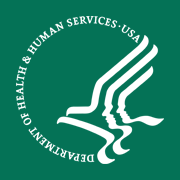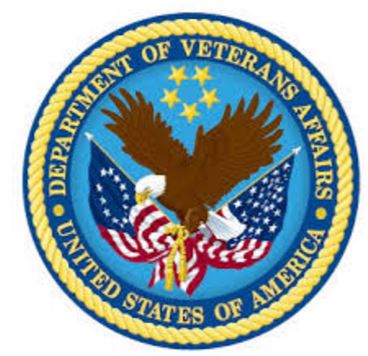Federal Agencies Advance Alternative Payment Models in Medicine
The Department of Health and Human Services (HHS) has pushed forward several alternative payment models for the healthcare industry.

- In recent years, the federal government has positioned the healthcare industry to adopt new reimbursement tactics aimed at strengthening pay-for-performance initiatives. These regulations consist of alternative payment models such as bundled payments or value-based care reimbursement.

The Centers for Medicare & Medicaid Services (CMS), for instance, established the Comprehensive Care for Joint Replacement Model, which consists of implementing bundled payments or reimbursement based on an episode of care within hip and knee replacement surgeries.
The proposed rule for the bundled payment model was initially was published on July 9, 2015 and the finalized legislation was made available on November 16, 2015. The start date of the Comprehensive Care for Joint Replacement Model is set for April 1, 2016.
“The CJR [Comprehensive Care for Joint Replacement] model holds participant hospitals financially accountable for the quality and cost of a CJR episode of care and incentivizes increased coordination of care among hospitals, physicians, and post-acute care providers,” CMS stated on its website.
“The episode of care begins with an admission to a participant hospital of a beneficiary who is ultimately discharged under MS-DRG 469 (Major joint replacement or reattachment of lower extremity with major complications or comorbidities) or 470 (Major joint replacement or reattachment of lower extremity without major complications or comorbidities) and ends 90 days post-discharge in order to cover the complete period of recovery for beneficiaries. The episode includes all related items and services paid under Medicare Part A and Part B for all Medicare fee-for-service beneficiaries, with the exception of certain exclusions.”
CMS has had a rich history of supporting bundled payment models starting in the 1980s when an inpatient prospective payment system was created. This was the first step in which the Medicare program reimbursed hospitals based on a fixed amount for each patient’s hospital stay and diagnosis.
Starting in 1991, CMS implemented a bundled payment system for coronary artery bypass graft (CABG) including hospitalizations and readmissions during a 90-day time frame. In 2009, the agency introduced the Acute Care Episode (ACE) program to institute bundled reimbursement for orthopedic and cardiac surgery. The Acute Care Episode program involved five hospitals and showed a savings of $585 for each episode of care.
The bundled payment system for joint replacement among others is not the only one being touted within the federal government, as the Department of Health and Human Services (HHS) has pushed forward several alternative payment models for the healthcare industry.
HHS has put aside three years for healthcare providers to adopt alternative payment models and move away from fee-for-service reimbursement. HHS Secretary Sylvia Burwell announced last year that toward the end of 2018, CMS will mandate that 50 percent of Medicare reimbursement to be cast as alternative payment models.
Some providers may choose to have the health of their Medicare beneficiaries to be managed through an accountable care organization and participate in shared savings while others may choose to adopt a bundled payment system through the Medicare program.

The VA is looking to prevent delays in Choice provider reimbursement and ensure greater healthcare access among veterans. The VA is seeking to put an end to administrative burdens among VA community providers.
Essentially, this means community providers will no longer be obligated to provide medical records of a particular patient before being reimbursed under the Choice program. Previously, clinicians had to submit a copy of a veteran’s medical record but this administrative burden has now been eliminated.
The payers Health Net and TriWest will have a simpler time of quickly reimbursing providers due to the fact that the Choice Program contract was changed to reduce extra paperwork requirements.
While data sharing and interoperability of patients’ medical histories and information is still an important part of treating veterans within the VA, this will no longer be linked to provider reimbursement.
“This administrative step just makes sense,” VA Under Secretary for Health Dr. David J. Shulkin said in a public statement. “It ensures veteran access, timely payments and strengthens our partnerships with our Choice providers. We know that providing veterans access to high-quality, timely healthcare would be impossible without collaboration with our community providers.”
In addition to this measure, the VA has established goals to consolidate community care programs, which also involves ensuring providers receive timely payments. The agency is attempting to create a singular community care program able to meet the needs of veterans, patients, and providers. Also, the VA is seeking to implement a medical claims solution that automates provider payment.
PatientPay RCM Connect is one potential solution for revenue cycle management, as it allows for quicker and simpler methods for processing medical billing, a company press release explains.
“RCM Connect represents a better way for RCMs [revenue cycle management companies] to effectively deal with the changing landscape of the business of healthcare,” Tom Furr, PatientPay’s CEO, stated in the press release.
“It does not demand alterations to the billing infrastructure RCMs have in place. Instead, RCM Connect enhances those systems without any interruption to existing workflows or statement vendors, while easily adding our paperless billing capability that helps RCMs get paid faster and achieve better margins by eliminating those costs.”
As more federal agencies continue to propose solutions to lower healthcare spending and advance alternative payment models such as value-based care and bundled payments, the healthcare industry will become a new landscape of pay-for-performance provider reimbursement.
